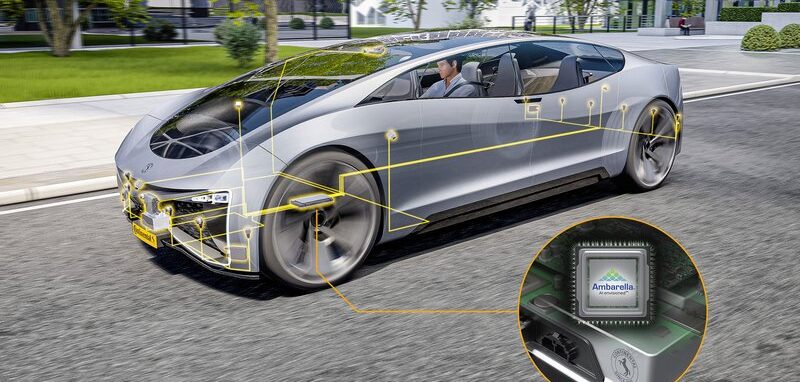Semiconductor company Ambarella’s CV3 artificial intelligence (AI) system-on-chip (SoC) family is to be integrated into Continental’s advanced driver assistance systems (ADAS).
The centralized single-chip processing is based on 5nm technology. Ambarella asserts that the SoCs provide significant AI performance per watt for neural network computation, with a performance increase of more than 40 times greater than its former semiconductor chip family. Additionally, Ambarella integrates its image signal processor technology into all SoCs; this creates ADAS systems with higher levels of environmental perception in challenging lighting, weather and driving conditions for both machine and human vision. Humans see through the sensors of the assistance system.
The joint solution has been designed to enable the next generation of vehicles to process the environment perception of multiple sensors more quickly, thanks to an increased performance level. Sensor solutions include high-resolution cameras, radars, lidars as well as ultrasonic sensors. The integrated SoC enables early data fusion, in which the information from different sensors is superimposed simultaneously for various modalities such as emergency brake assist, parking or cruising.
Continental’s driver assistance systems are expected to process more collected data faster, with Ambarella’s SoCs. In this way, they should increase precision and enable a larger range of functions. The SoCs have been designed to be highly scalable, to ensure vehicle manufacturers can choose the necessary performance level for their system requirements on the same vehicle architecture. According to the semiconductor company, this solution also consumes less power – leading to fewer cooling efforts and enabling more energy savings and reduced system costs.
Frank Petznick, head of the autonomous mobility business area at Continental, said, “After exchanging on different use cases with Ambarella for two years, Continental is now integrating its high-performance, low latency and low-power processing chipset into our assisted driving solutions. This brings our ADAS systems to the next level and helps to serve the growing amount of sensor data in the vehicle. With this, we achieve a more comprehensive and accurate environment perception. We have now combined our expertise in this field to offer an enhanced level of systems performance as well as scalable solutions required by the market.”


